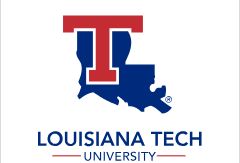Date of Award
Spring 2002
Document Type
Dissertation
Degree Name
Doctor of Philosophy (PhD)
Department
Computational Analysis and Modeling
First Advisor
Raja Nassar
Abstract
Three-dimensional laser-induced chemical vapor deposition (3D-LCVD) is a recently developed micro-manufacturing process that holds great potential for the production of complex microstructures with high aspect ratio. A laser beam is focused through a vacuum chamber window onto a movable substrate. The heat from the laser at or near the focal spot on the substrate induces the decomposition reaction of precursor gas in the chamber. As a result, solid-phase reaction products are deposited on the substrate to form the microstructure. In this dissertation, a numerical model is developed for simulating kinetically-limited growth of an axisymmetric cylindrical rod by pre-specifying the surface temperature distribution required for growing the rod and then by solving for the laser power that satisfies the pre-specified temperature distribution.
The solution using least squares is obtained iteratively by minimizing the sum of square deviations between the pre-specified surface temperature distribution and the calculated temperature distribution from the heat conduction equation with a given laser power as a heat source. The optimum laser power is calculated layer by layer using the above method. Thus the optimum laser power over rod length or growth time can be obtained (to grow a cylindrical rod) from the model.
LCVD experiments were carried out to verify this model. The optimum laser power over time is inputted into the computer which can automatically control laser power during the LCVD process. Experimental results show that rods grown under the predicted laser power from the numerical model were very close to being cylindrical in shape with a small deviation at the bottom of the rod. The reasons for this deviation are discussed and ways to further improve the model are recommended.
Recommended Citation
Chen, Qing, "" (2002). Dissertation. 697.
https://digitalcommons.latech.edu/dissertations/697

